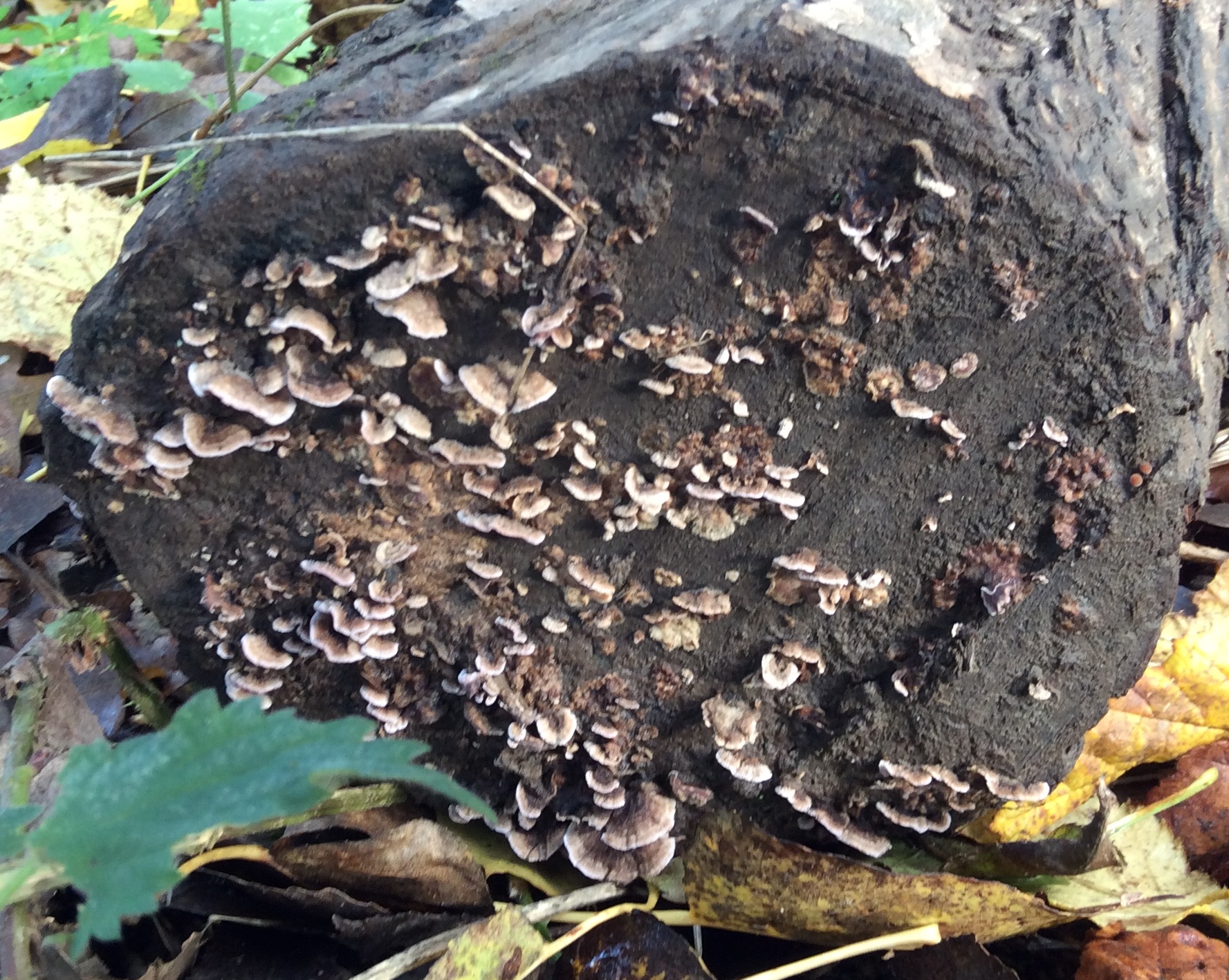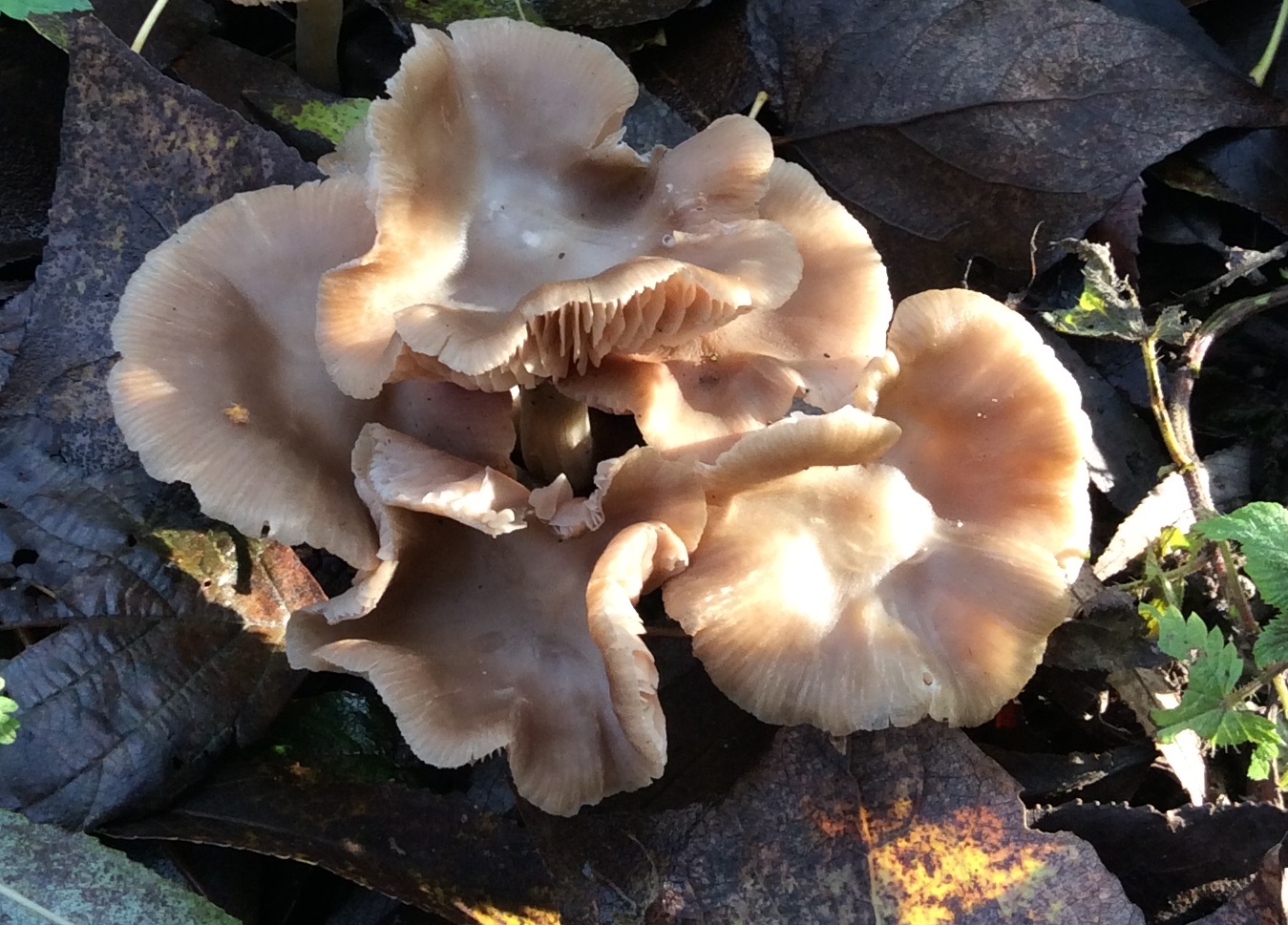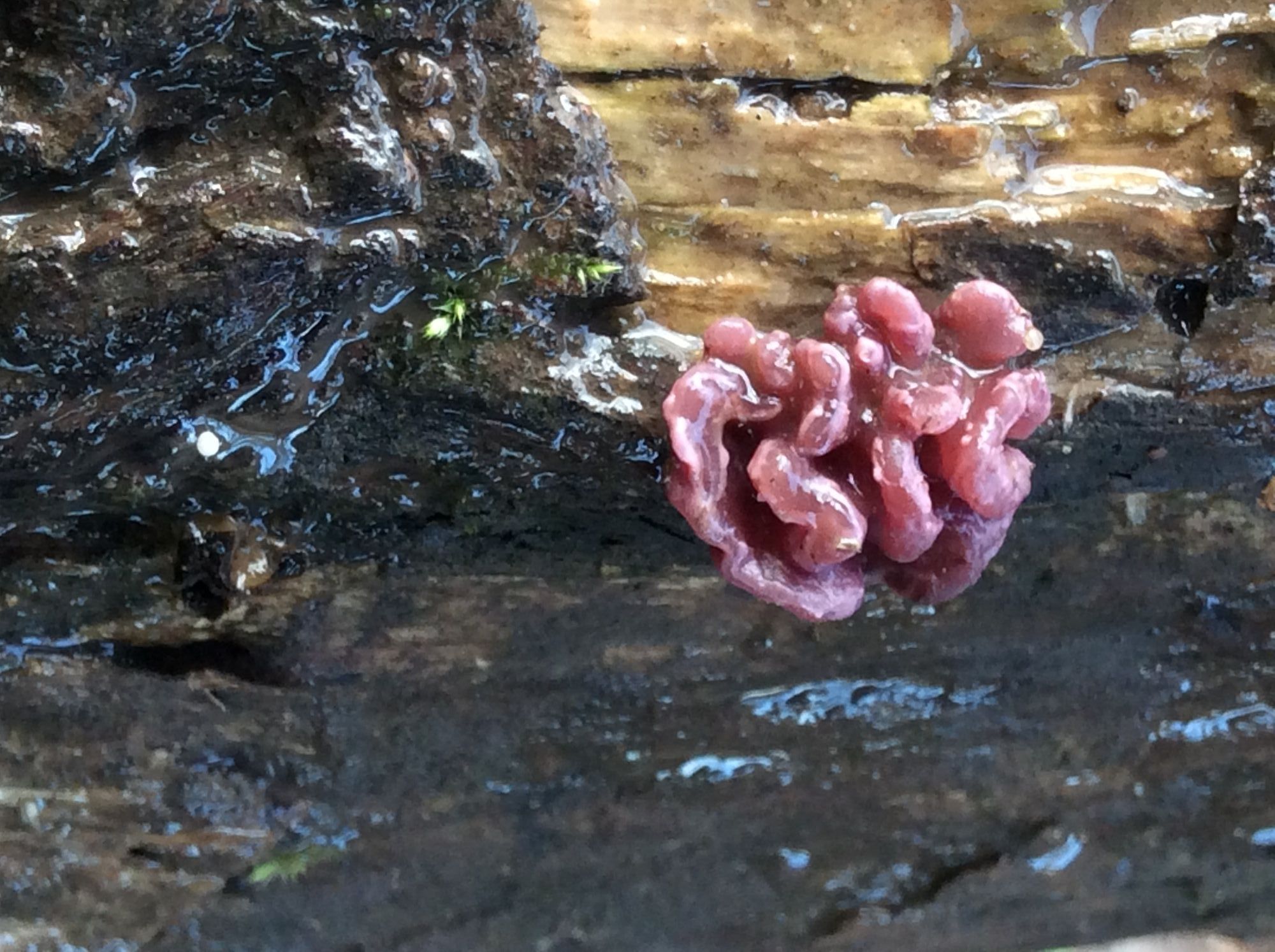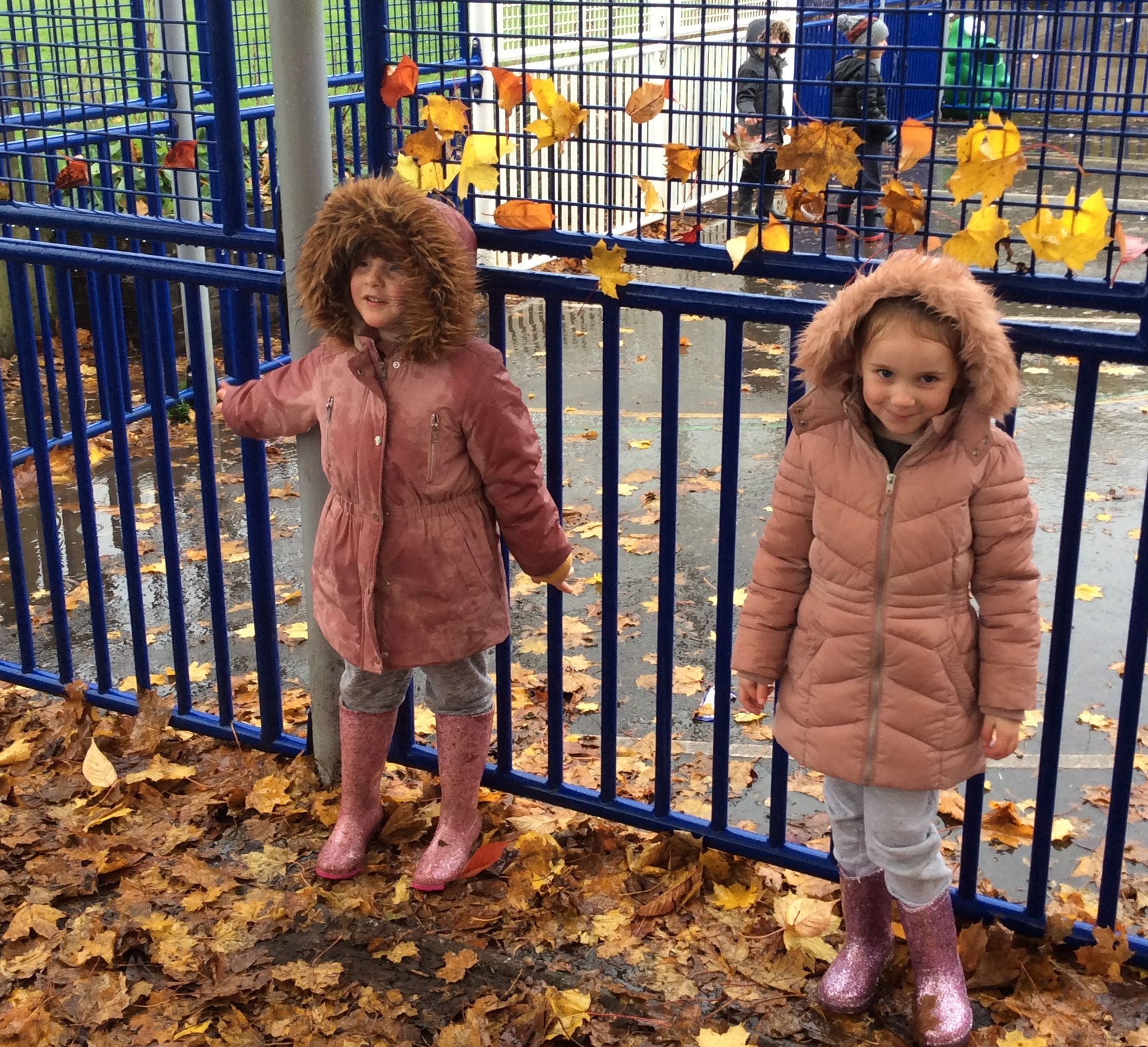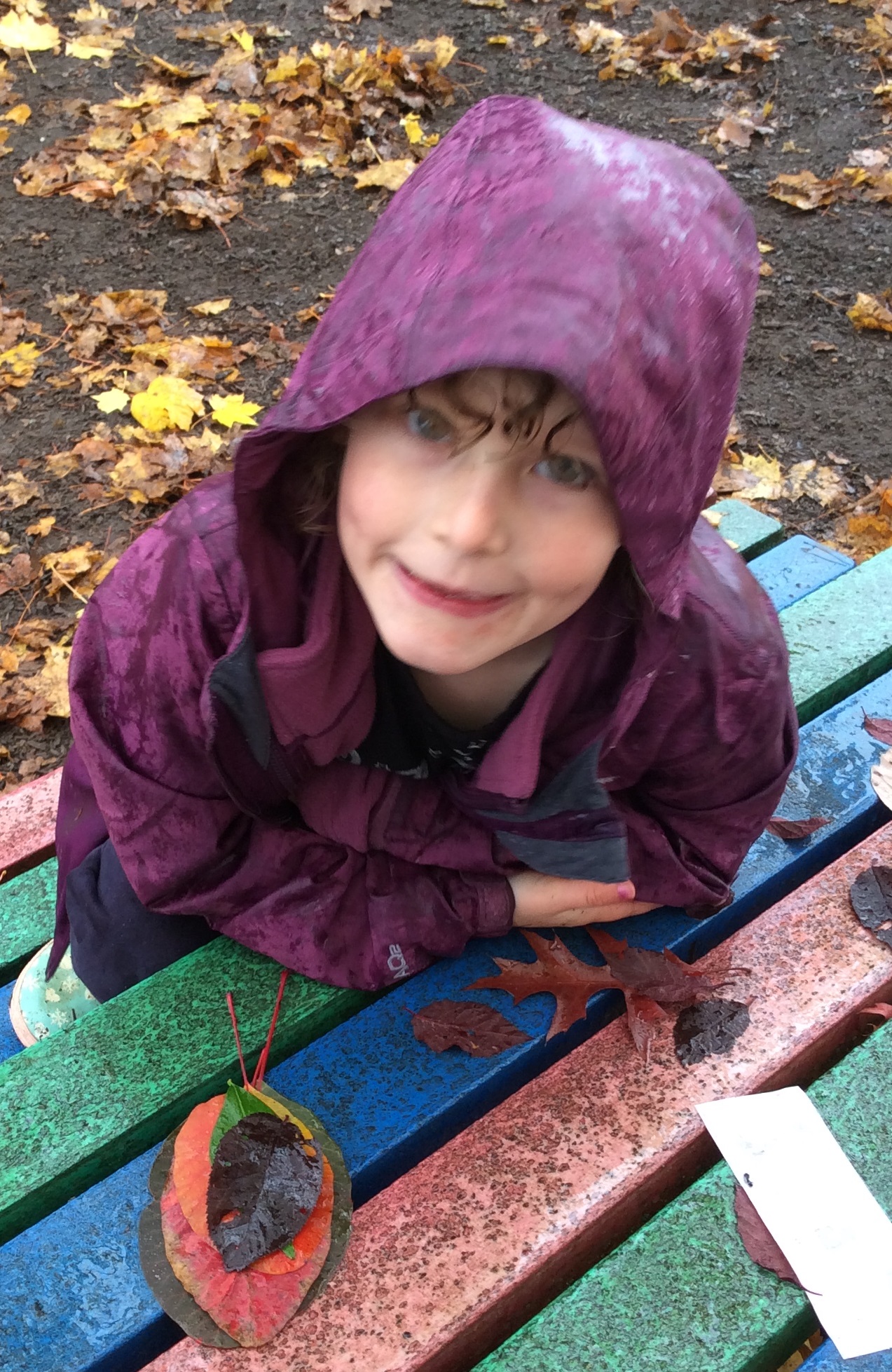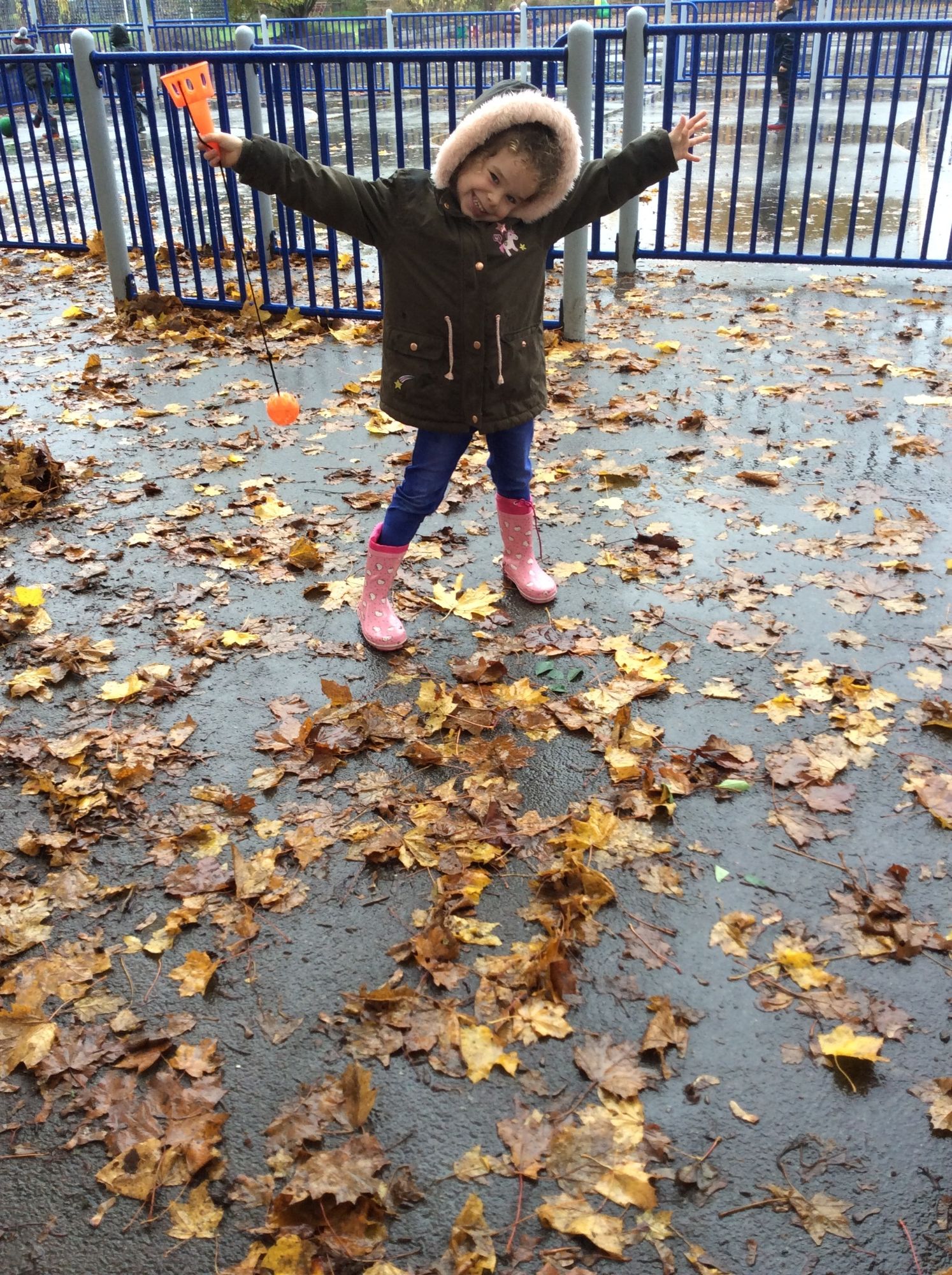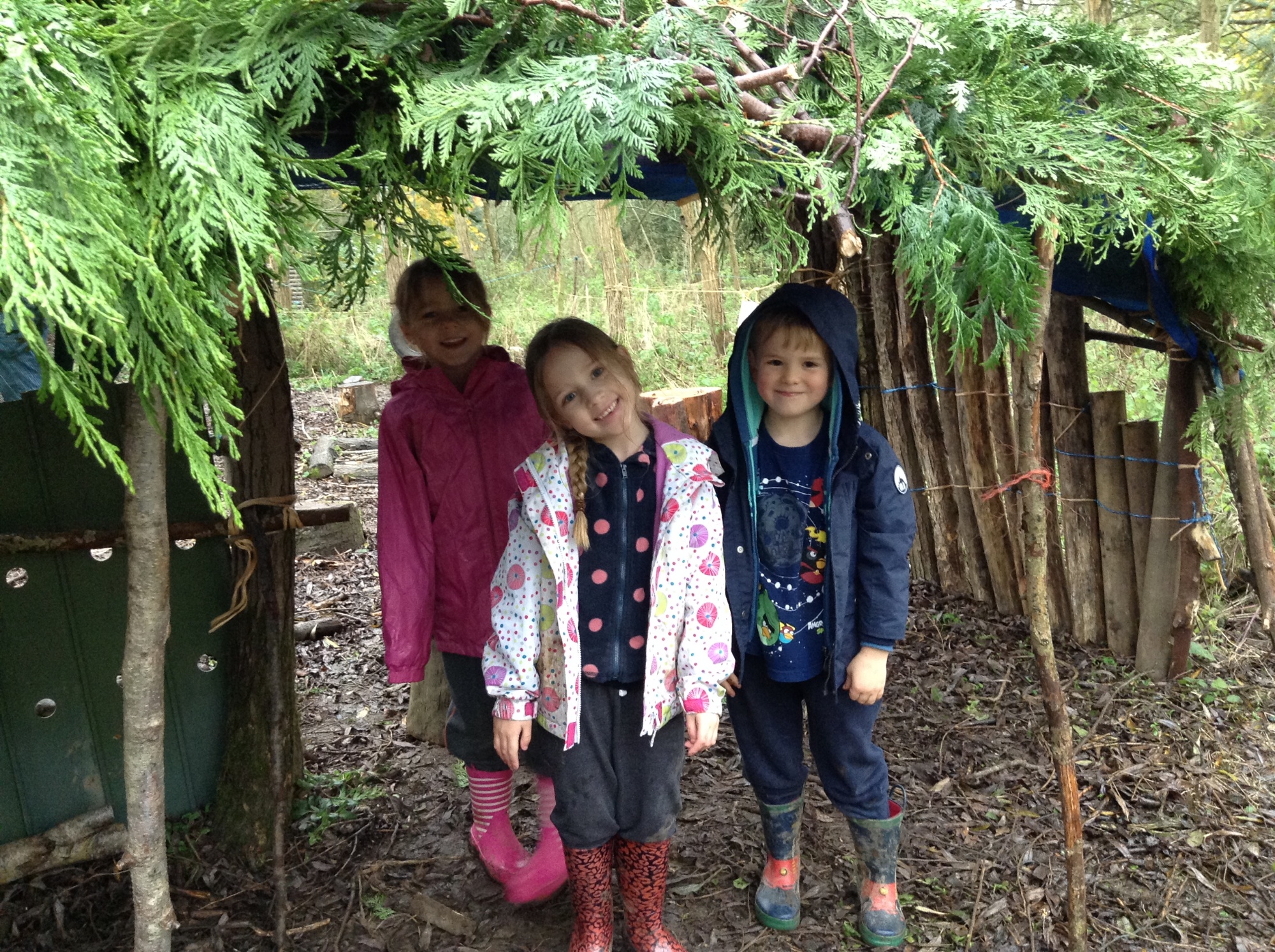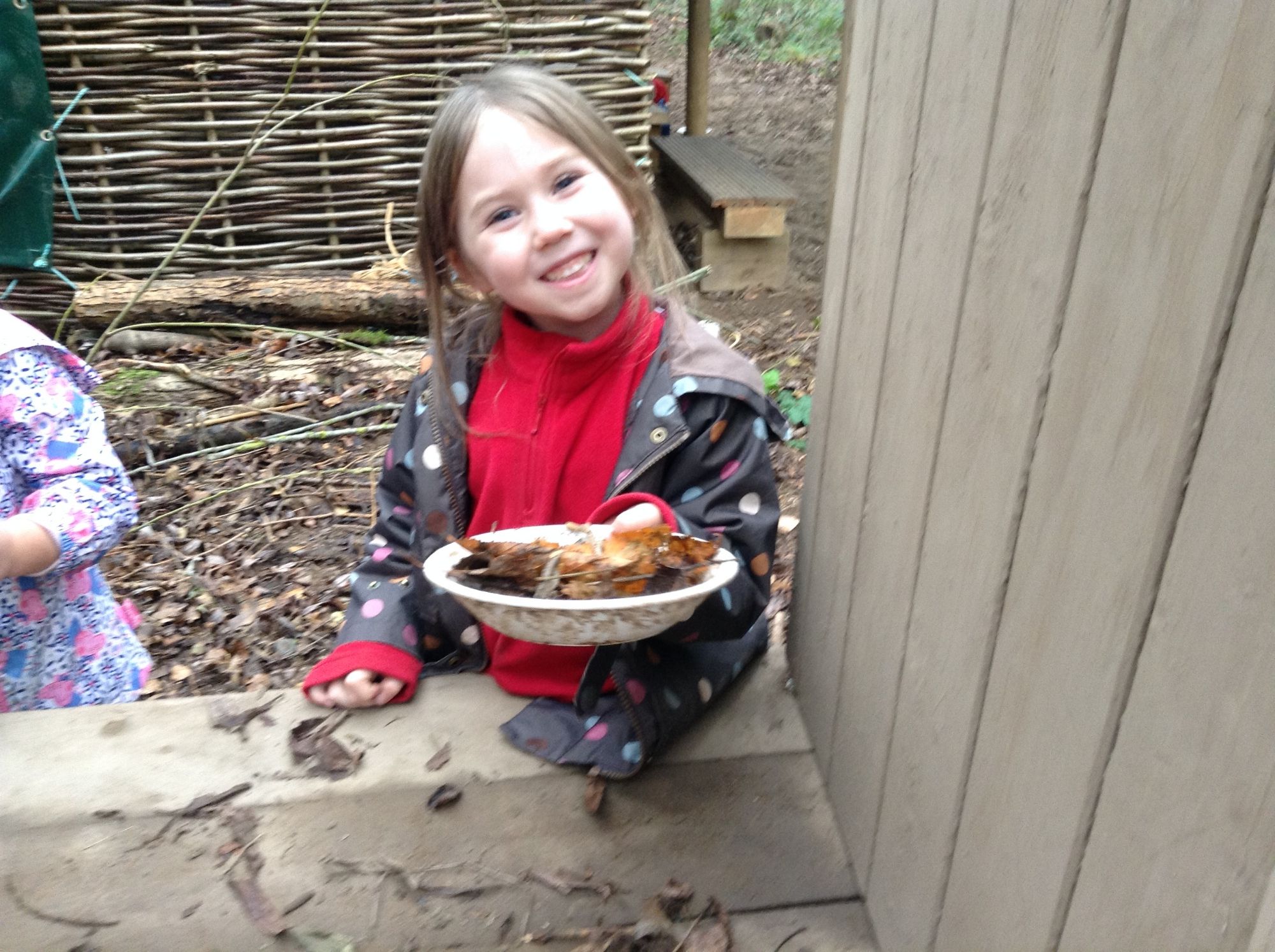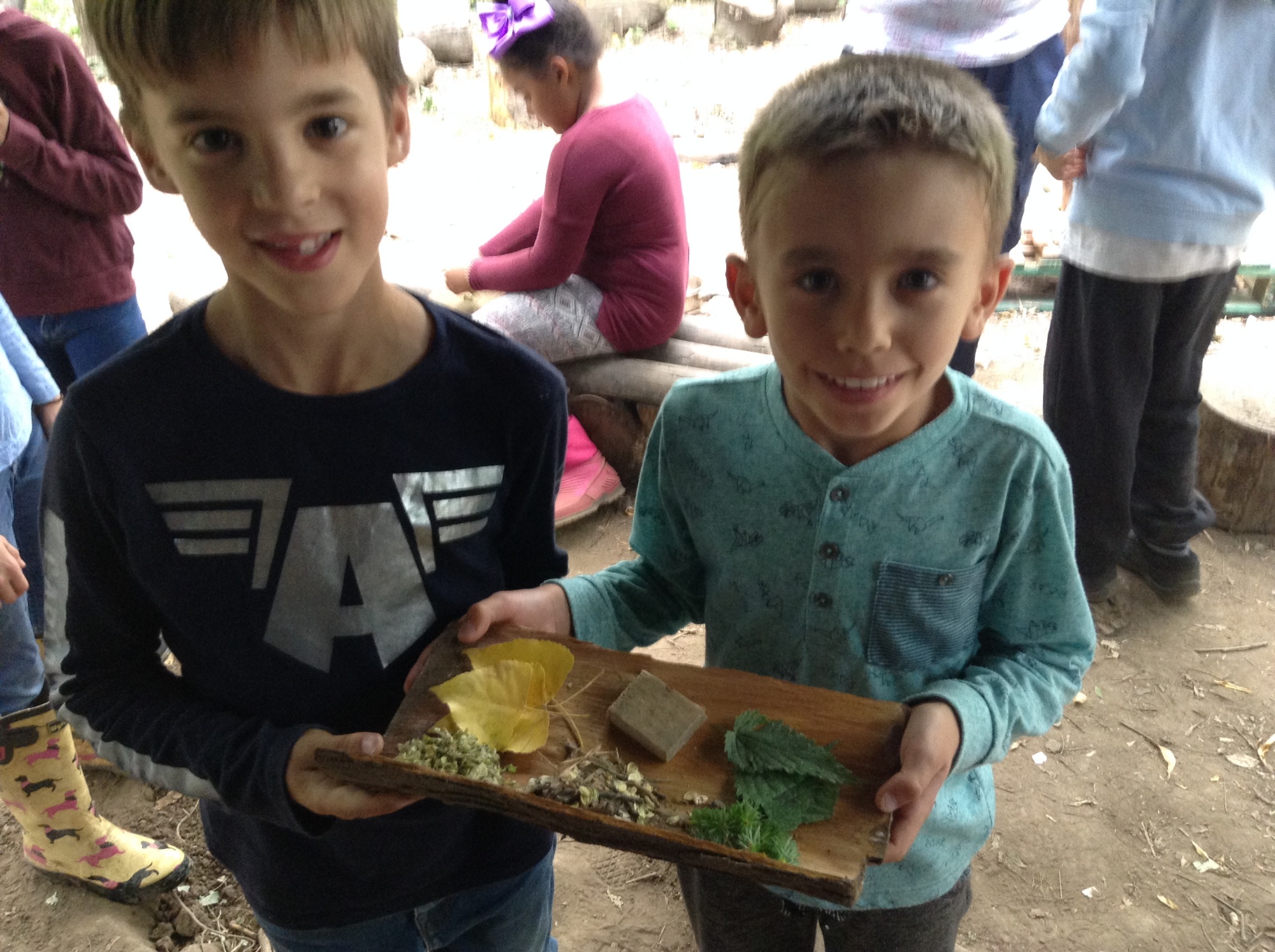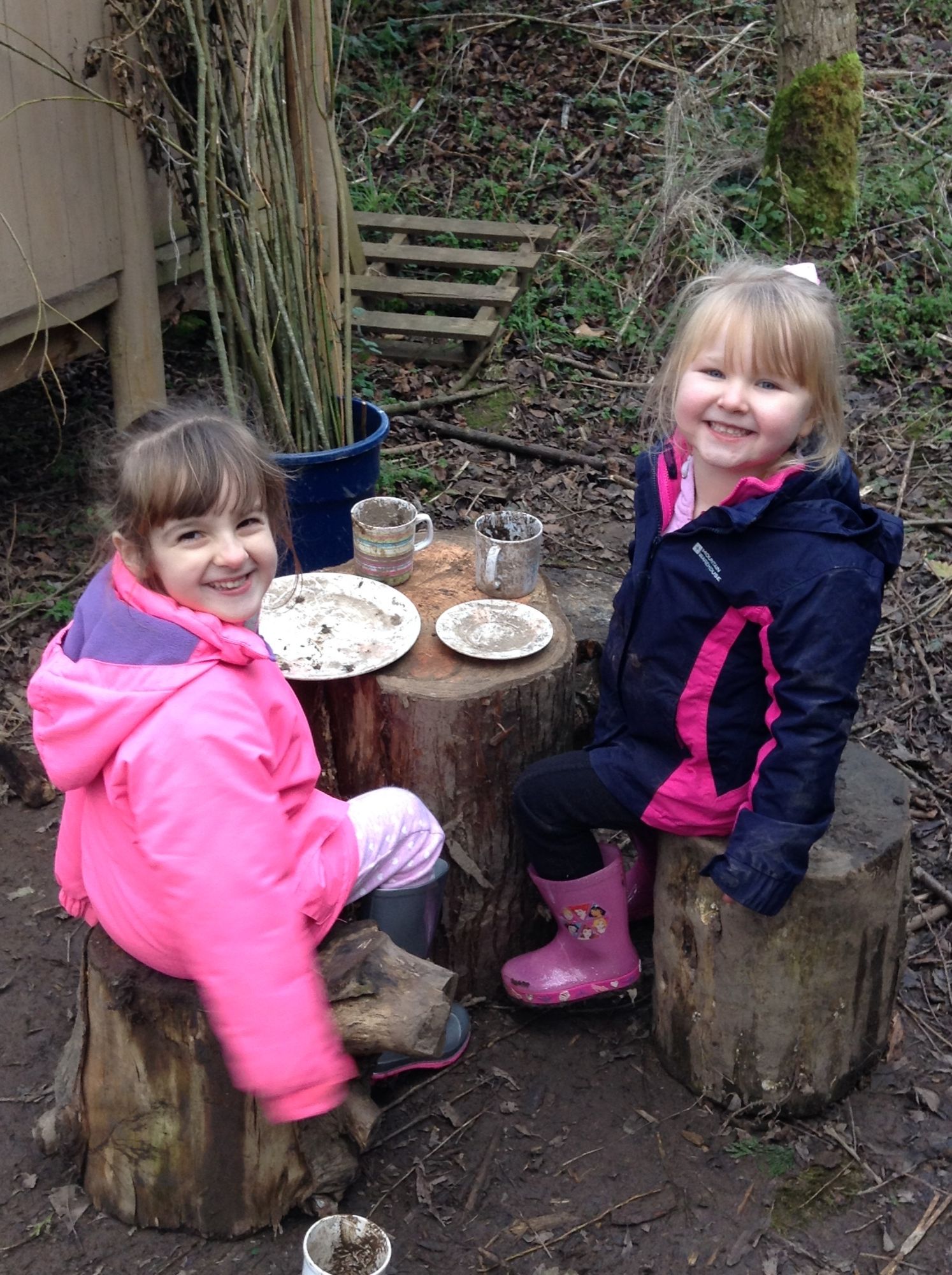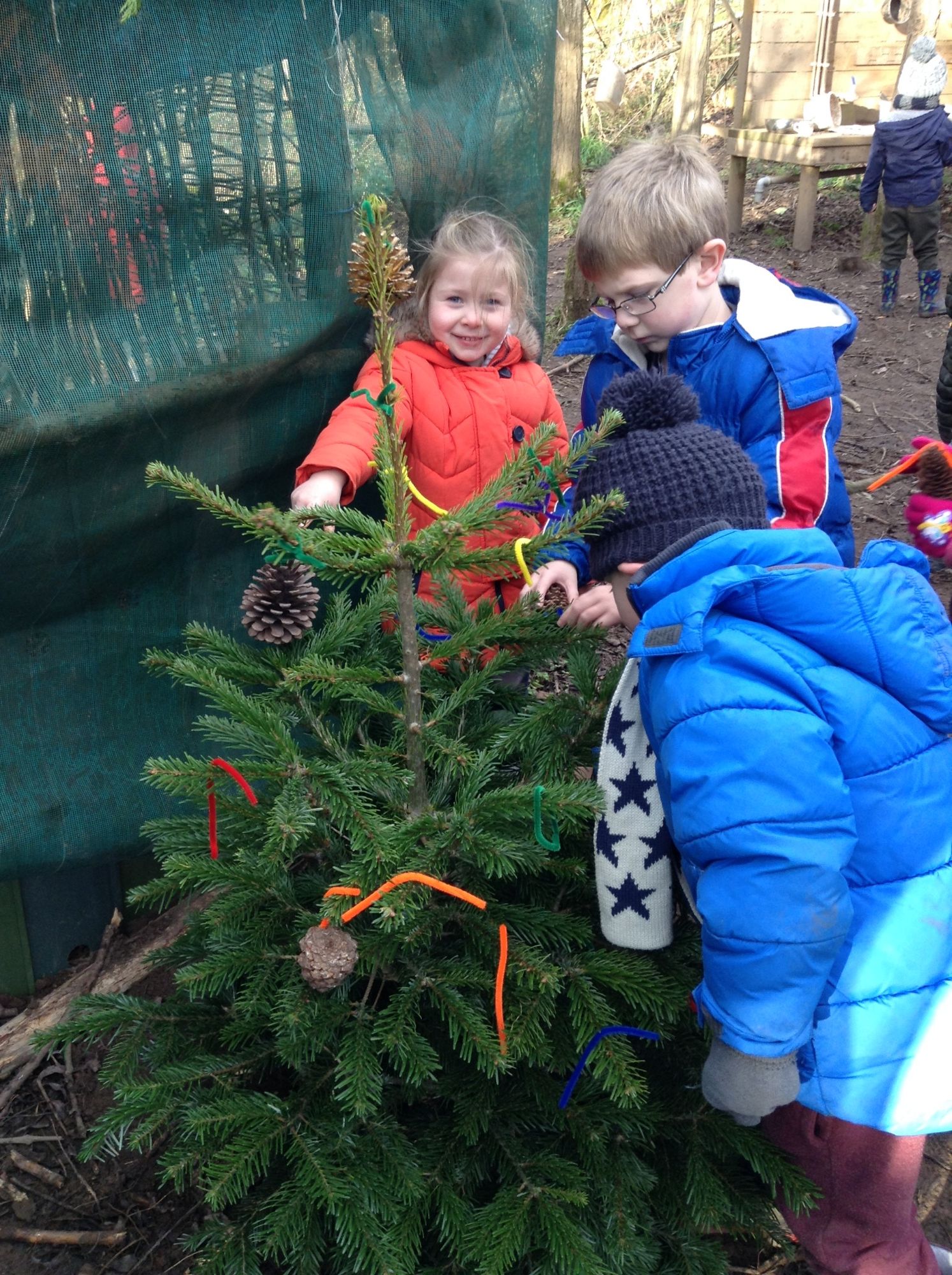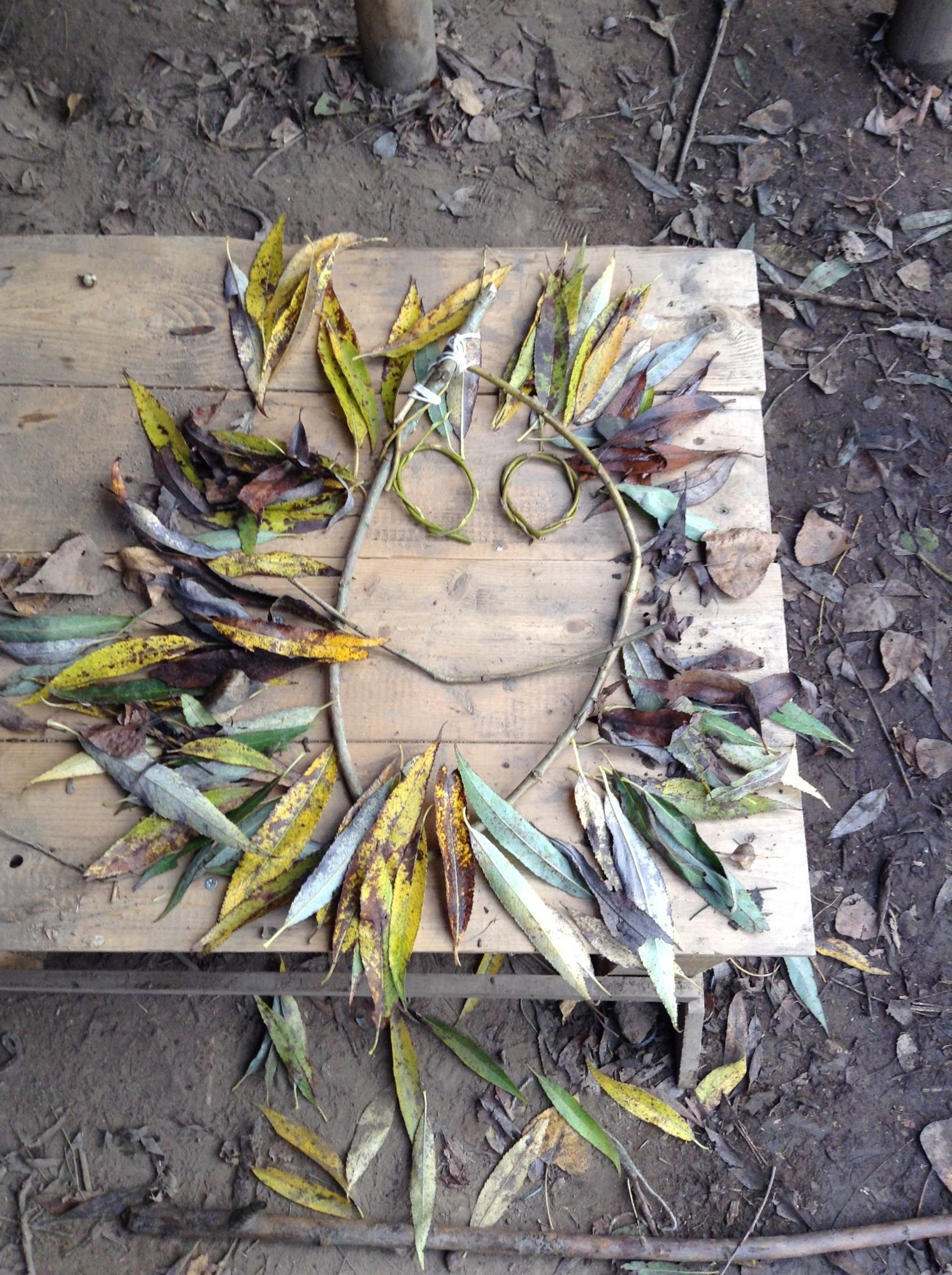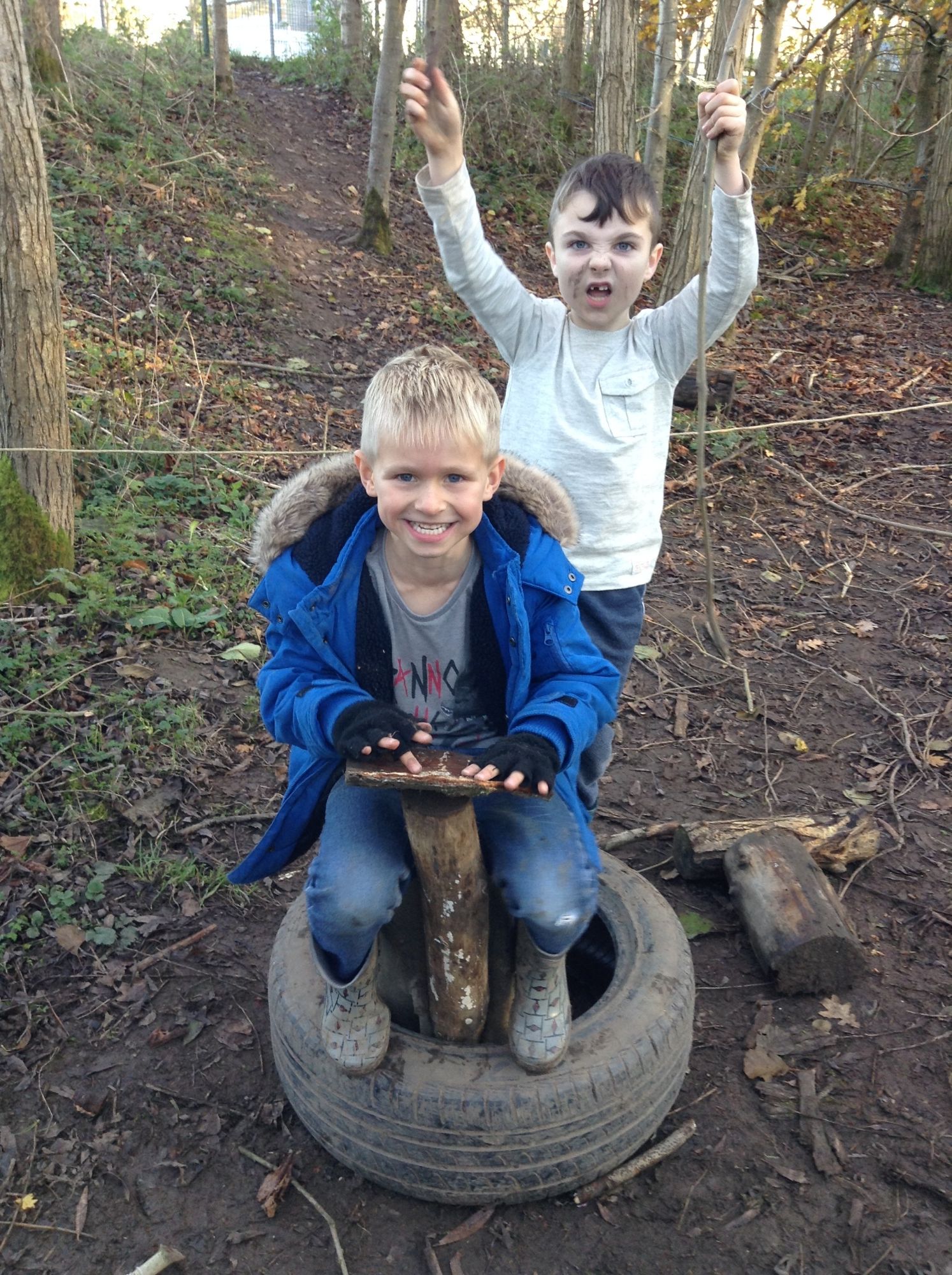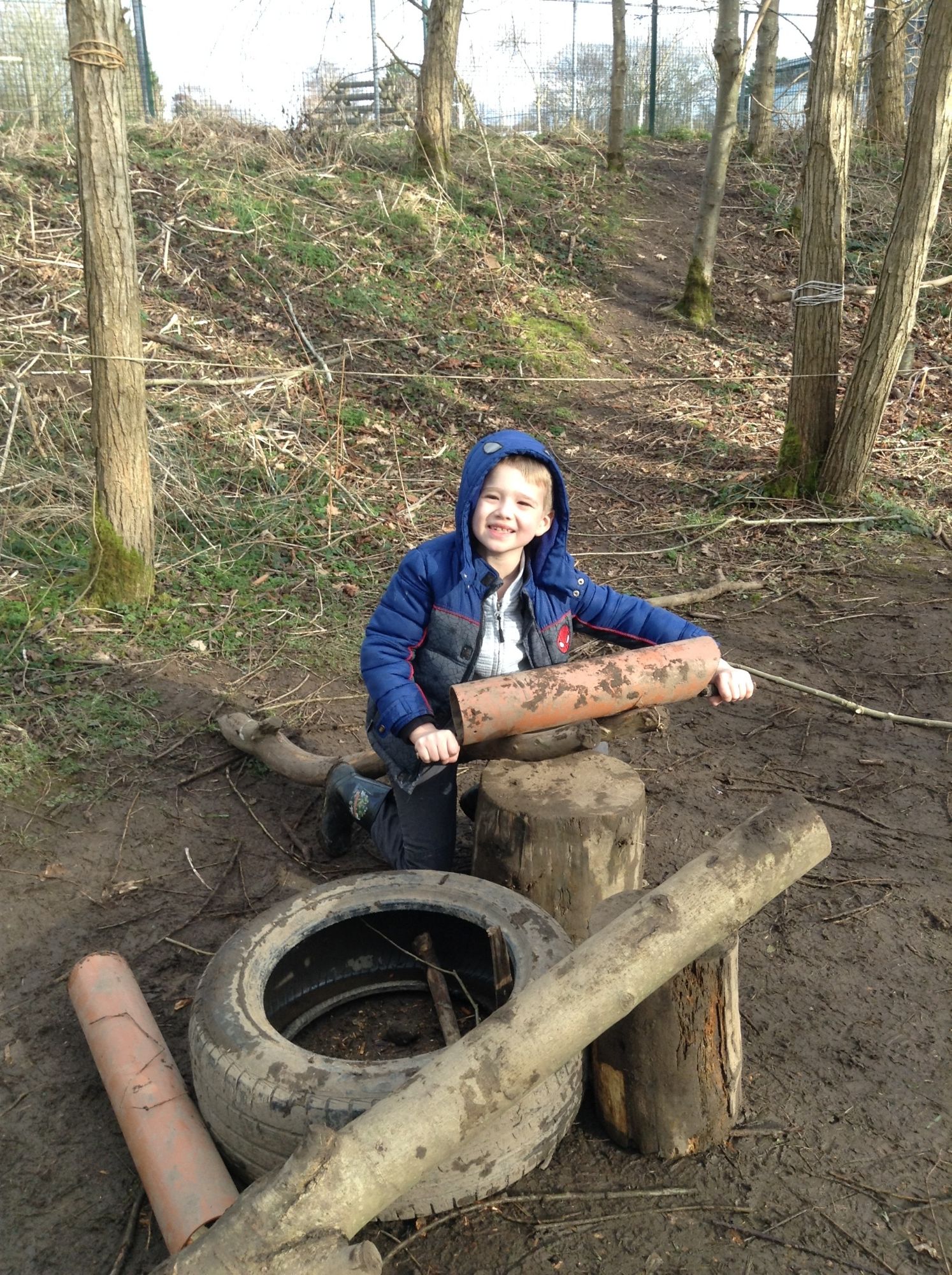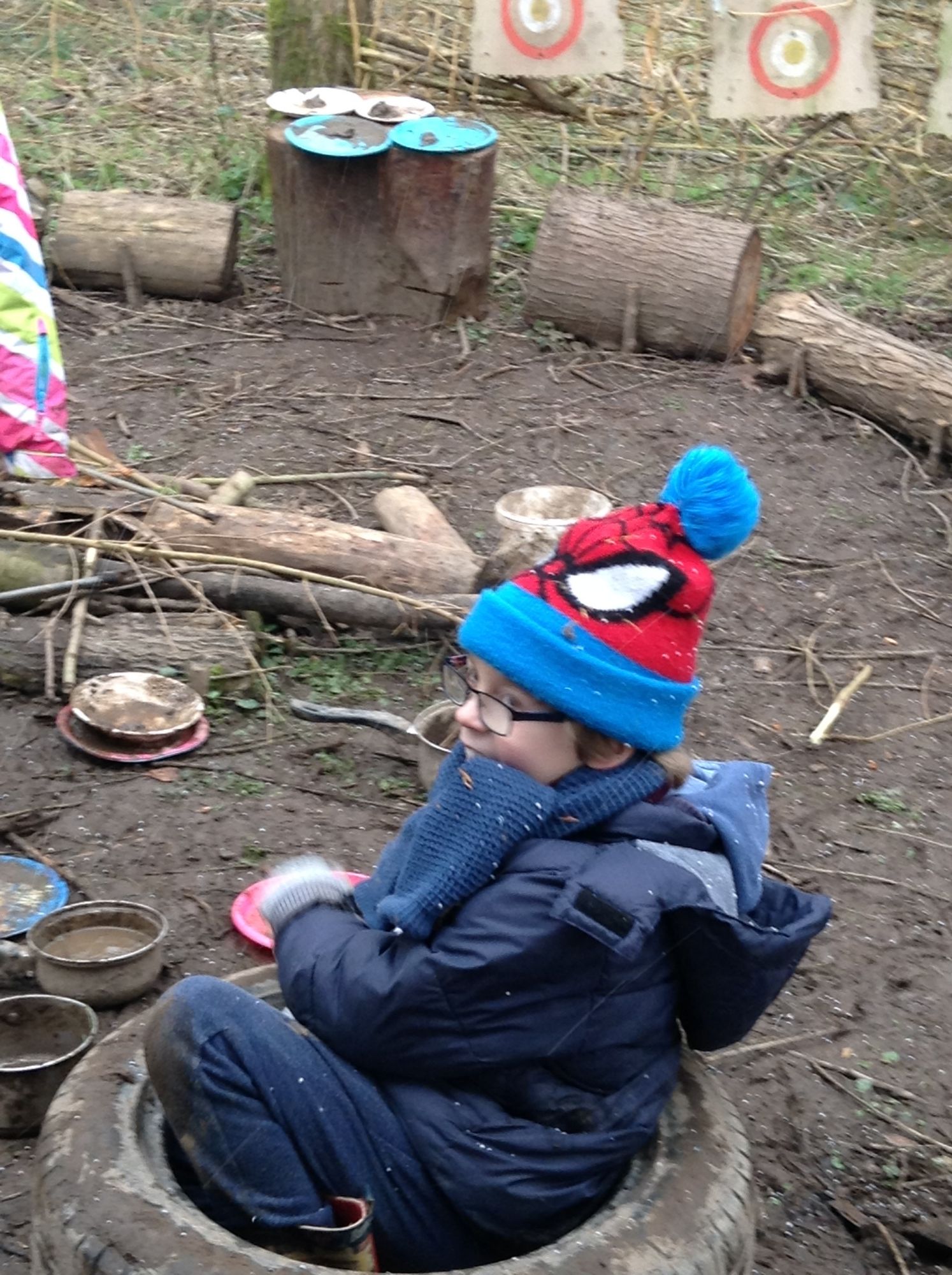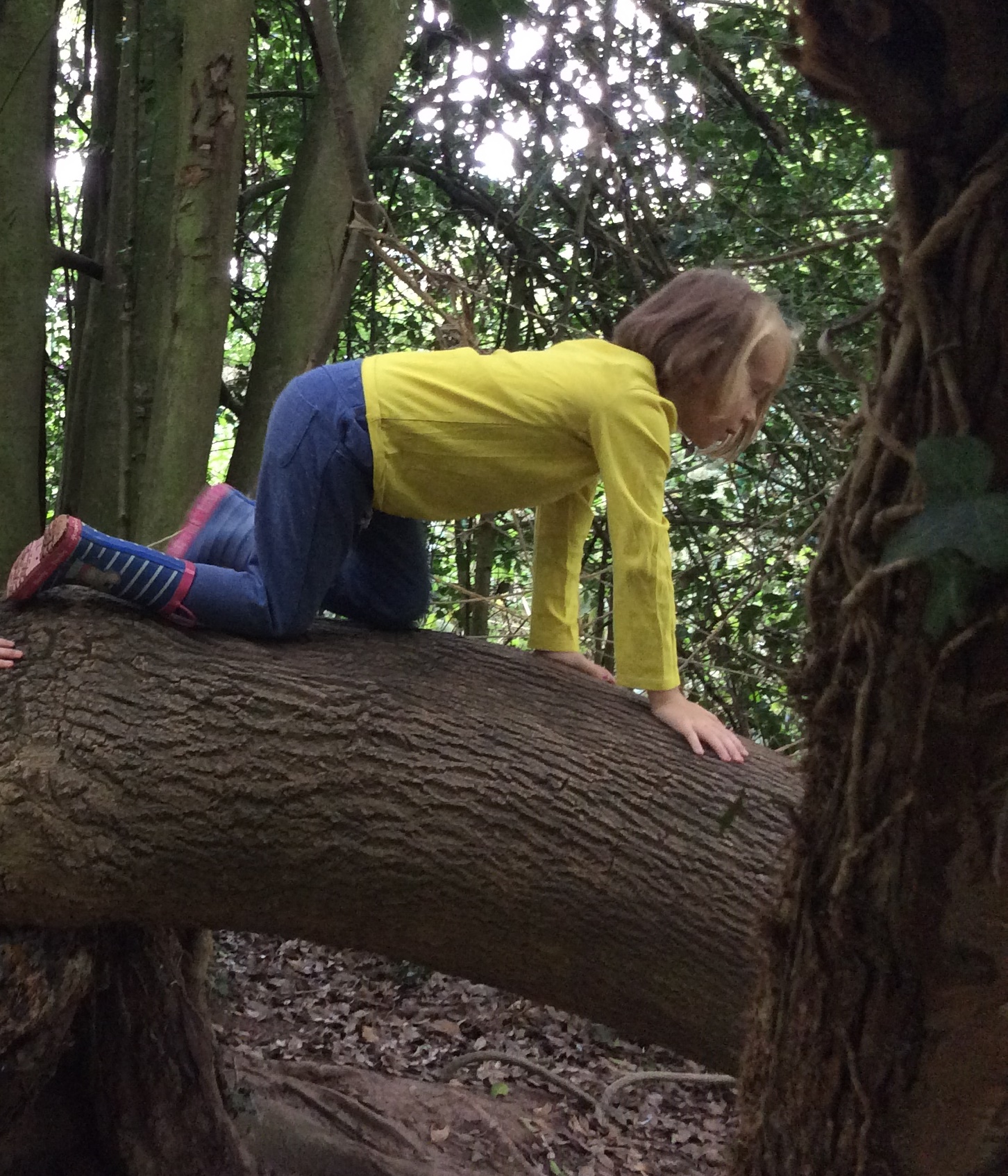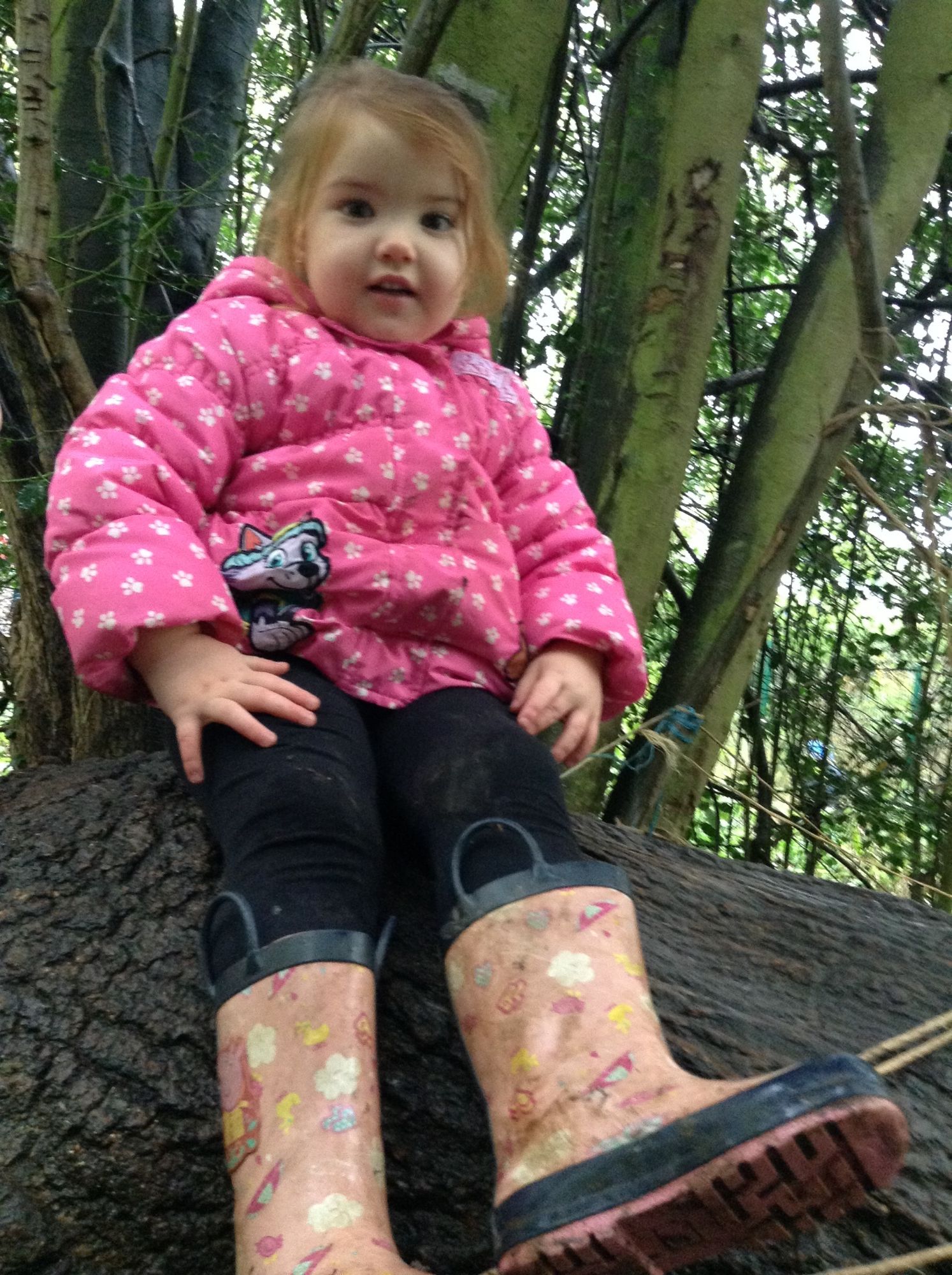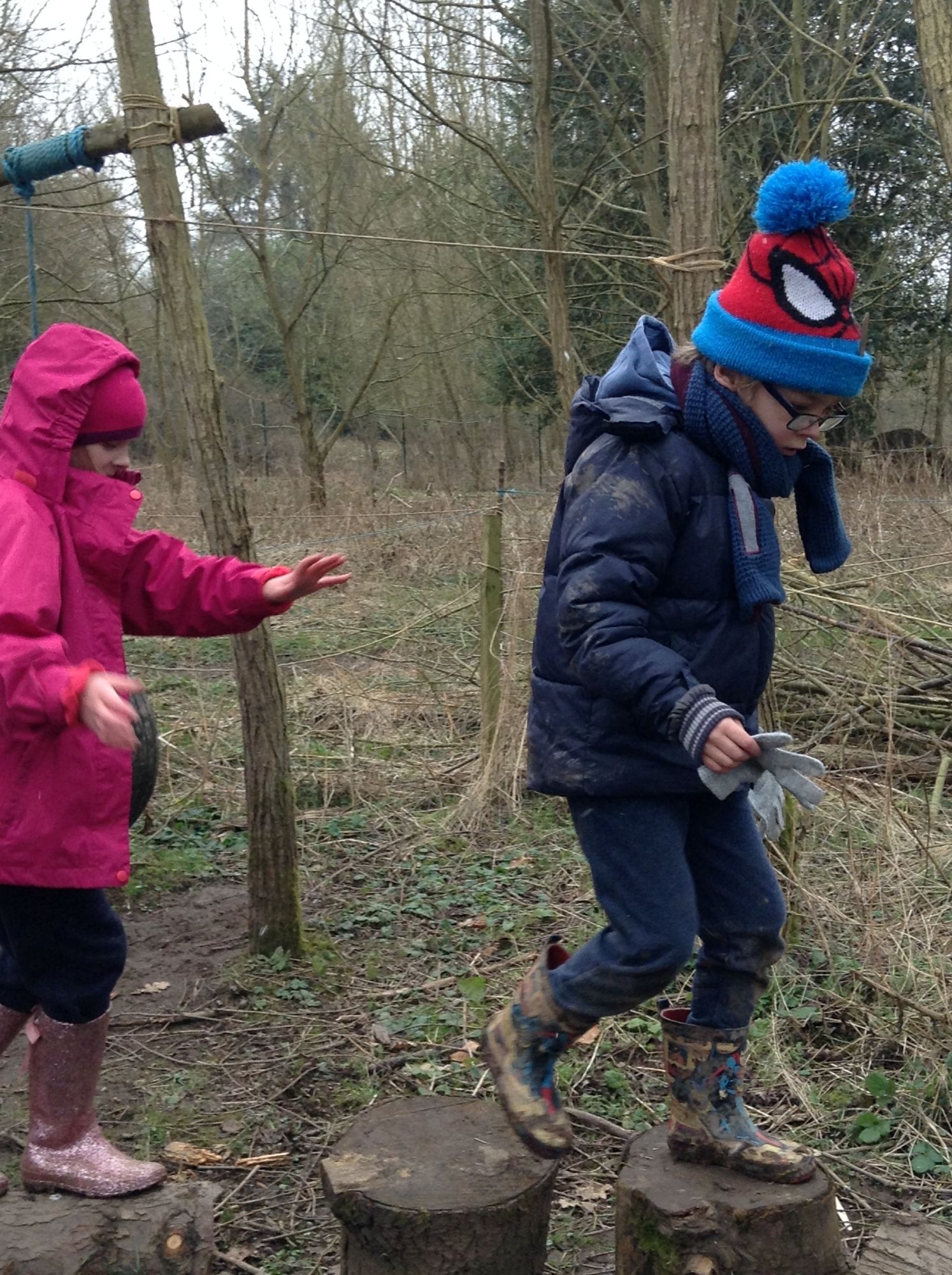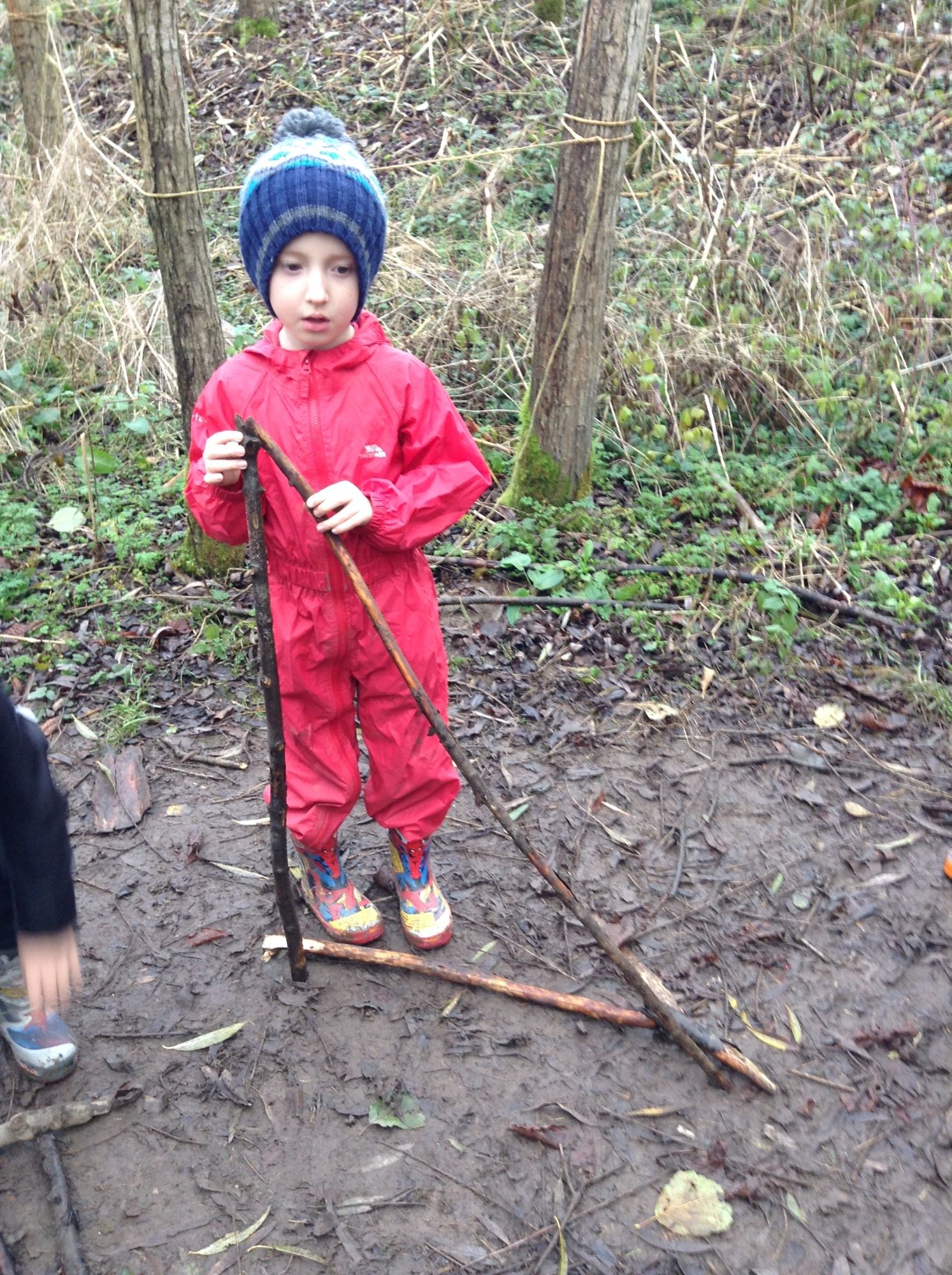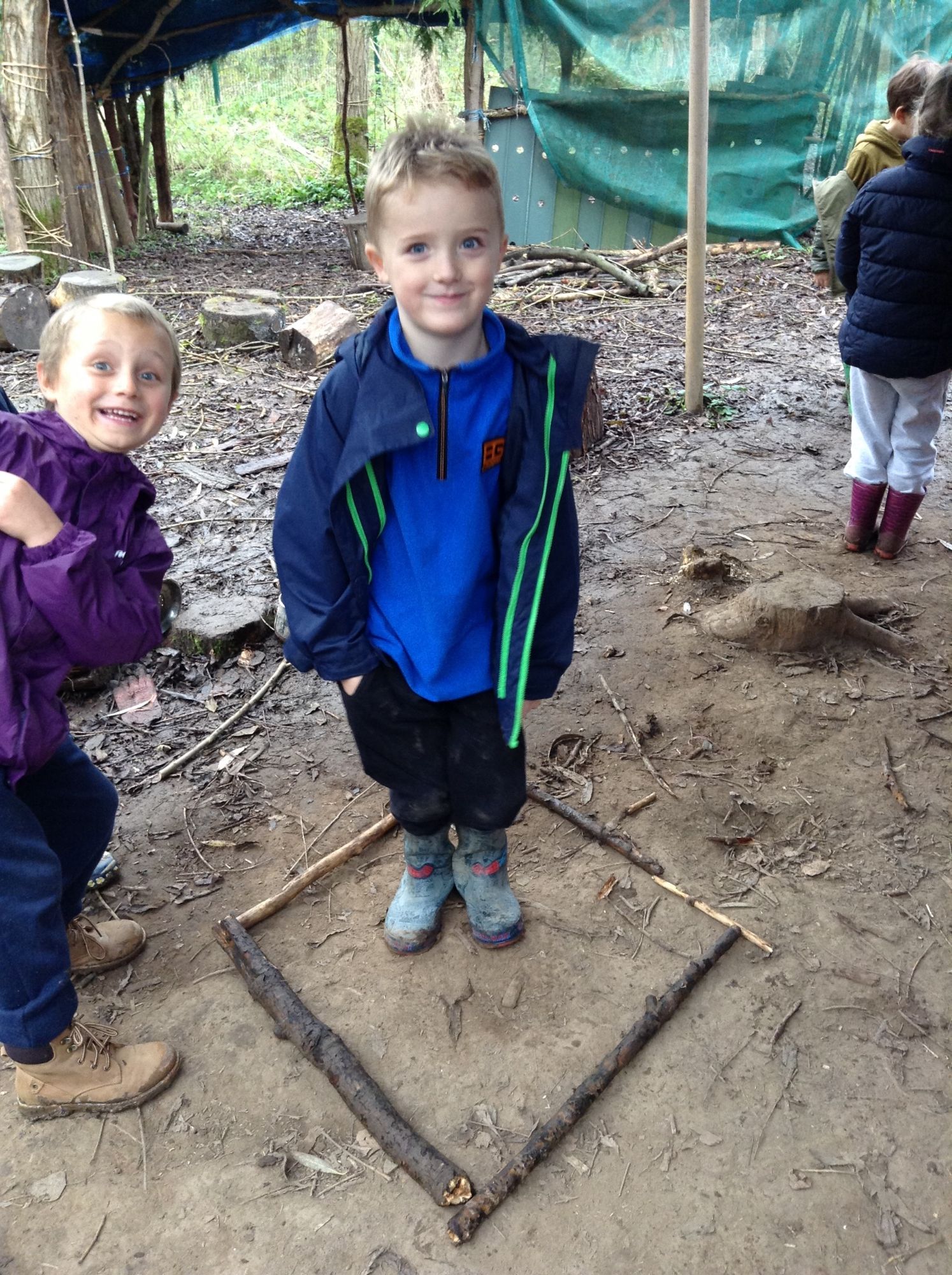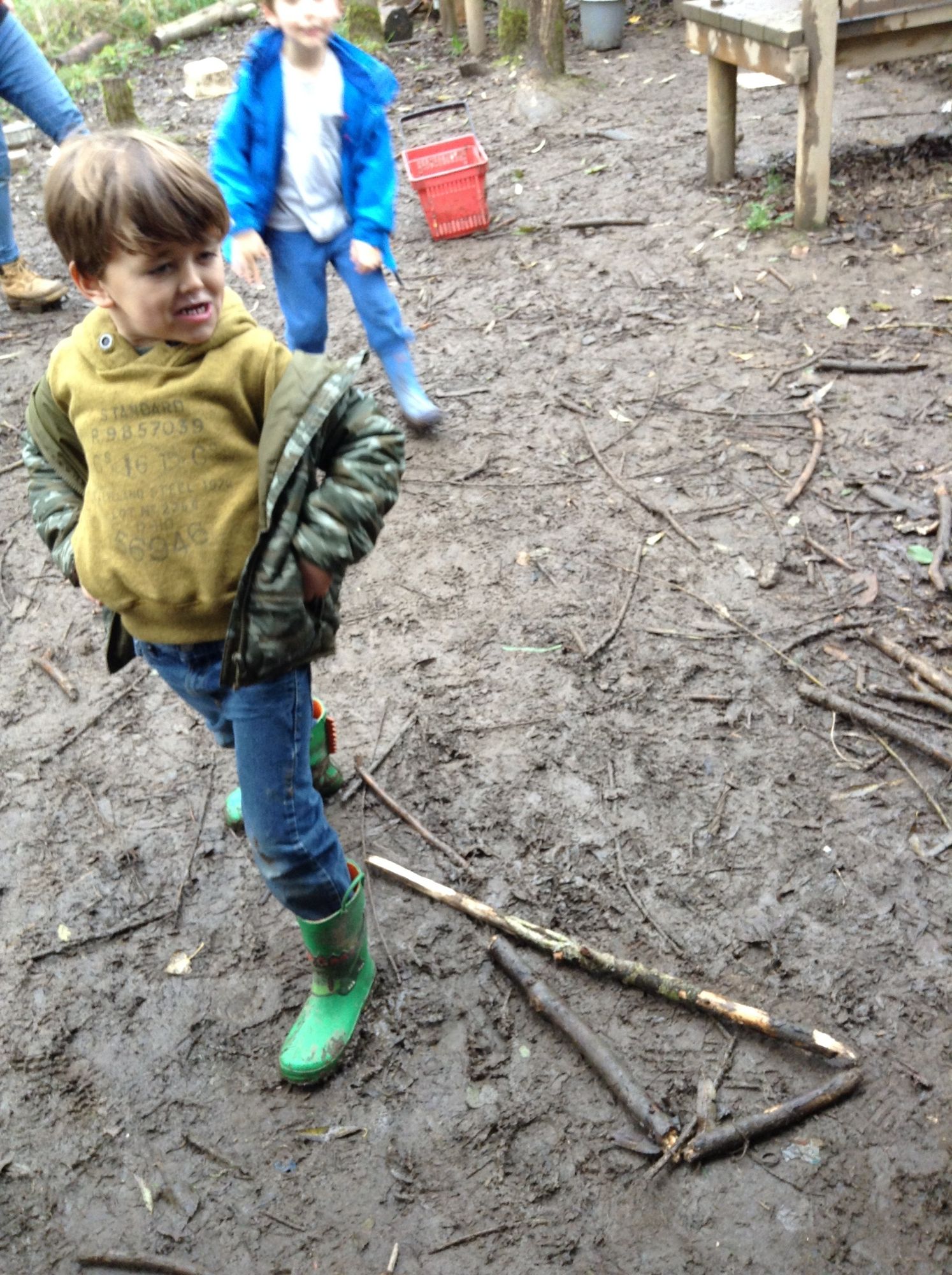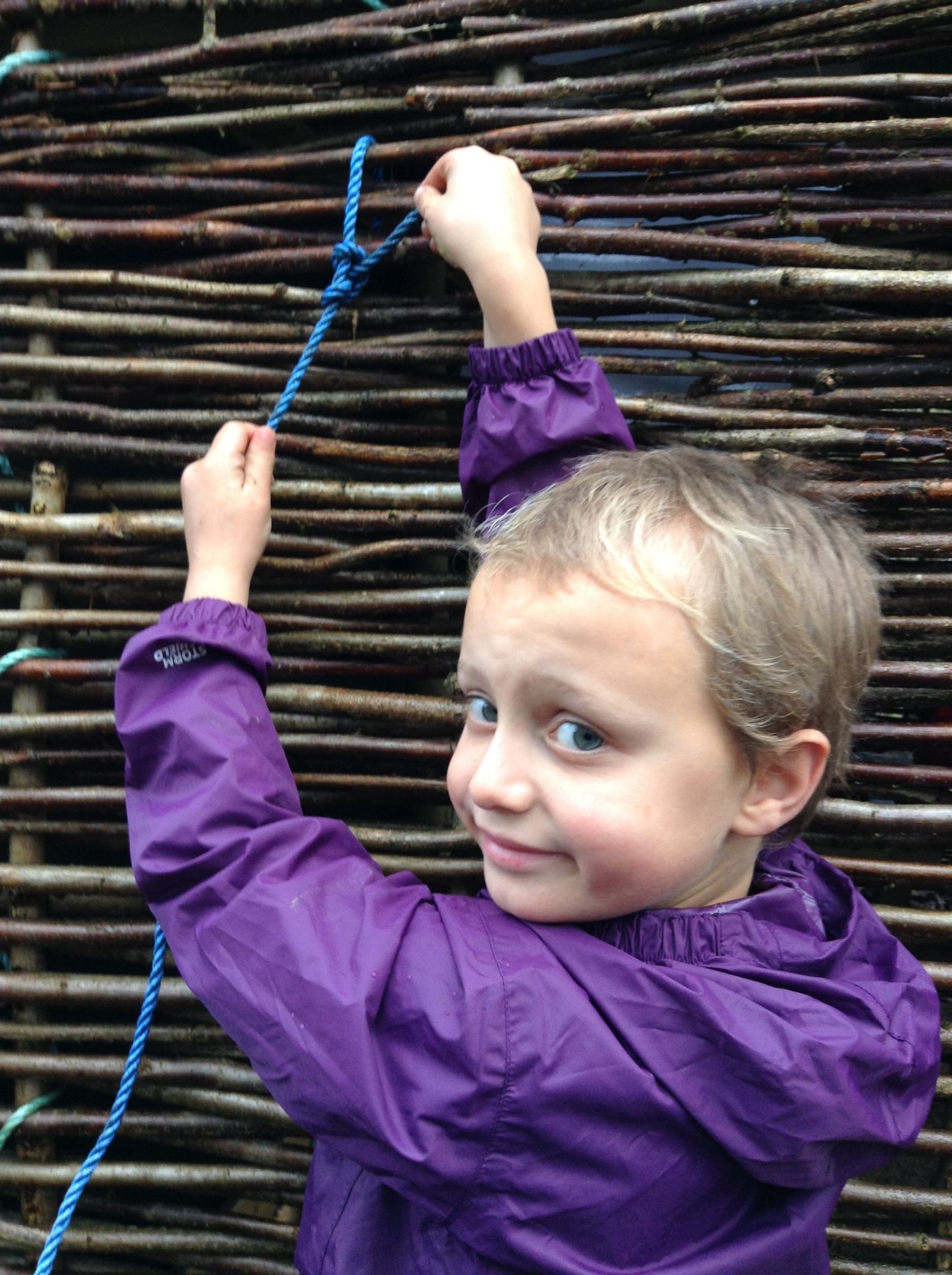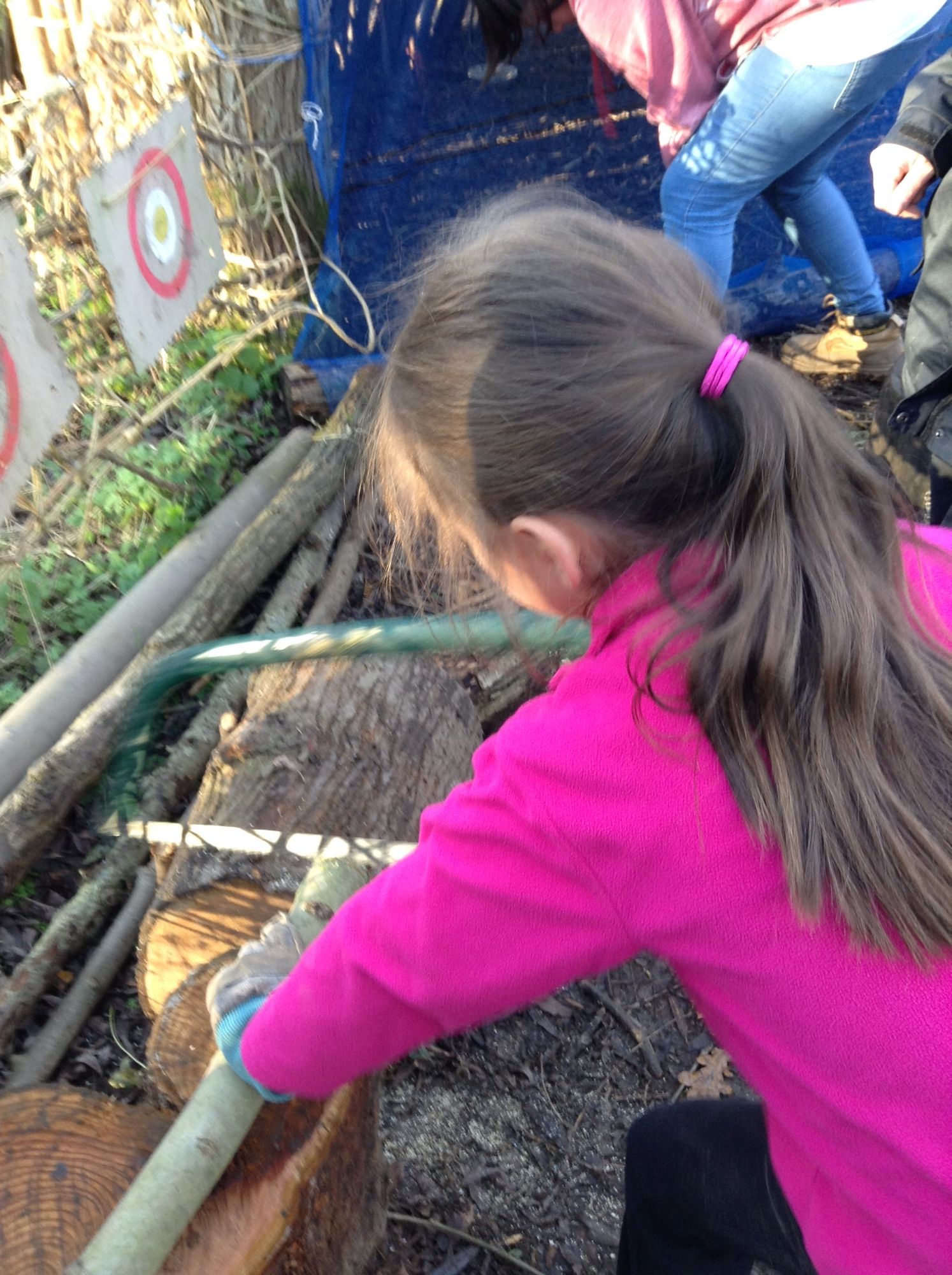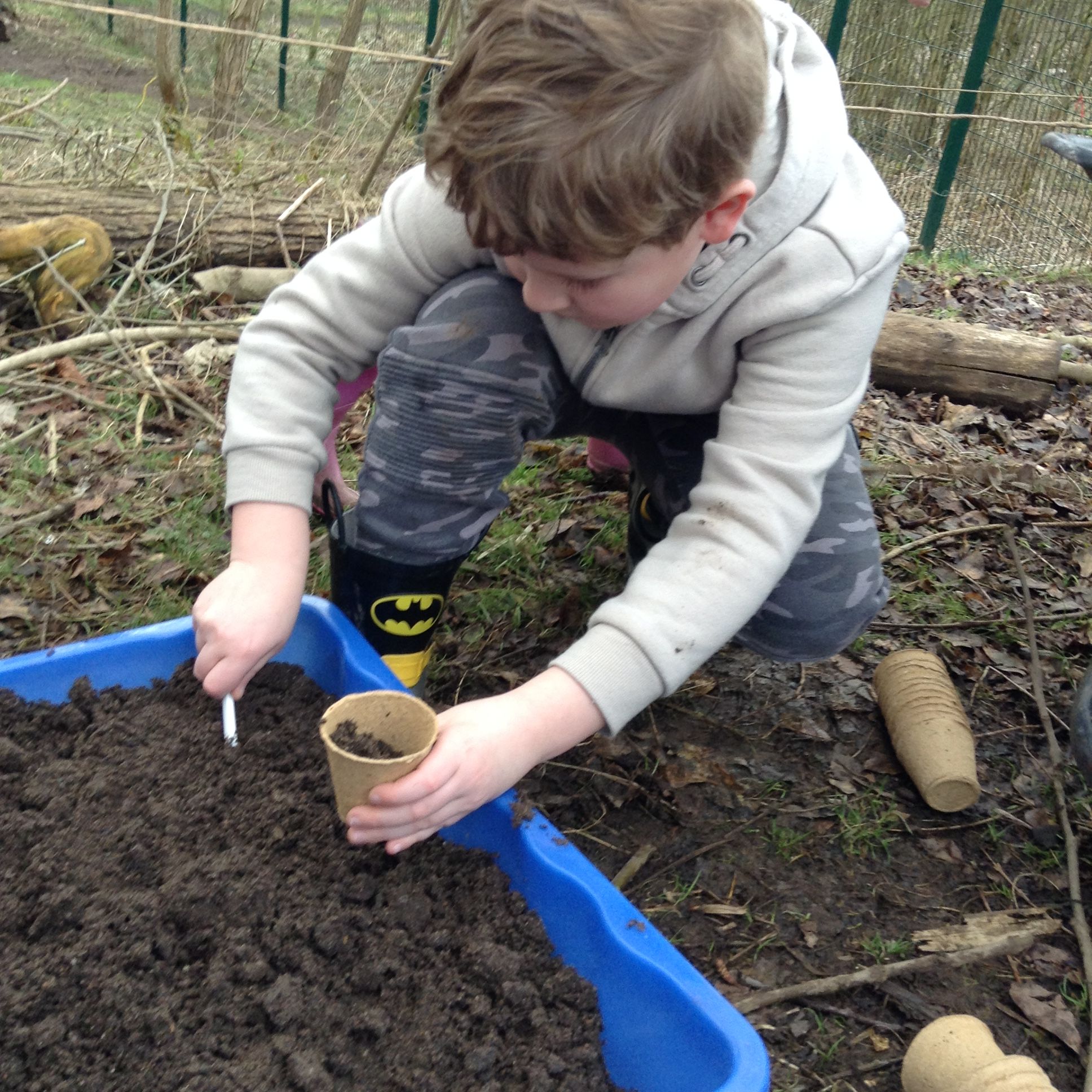Forest School
BPS Forest School
Forest School at BPS aims to promote holistic development of each child that visits our forest school. Forest school can help to develop resilient, confident, independent and creative learners. We think it is important to encourage nature awareness and respect for the world that we live in.
We are extremely fortunate to have our own wonderful woodland area, sandwiched between the school field and the beautiful River Severn.
Every child from 3s Nursery until Year Two spends an afternoon each week engaged in Forest School - whatever the weather, (the only exceptions being instances of high winds or thunder and lightening).
What clothing should your child wear to Forest School?
At Forest school, we recommend that your child comes in a puddle suit as it can get very muddy in forest school. If you don’t have one, it is important that your child comes in long sleeved tops and long trousers to prevent scratches and nettle stings. Your child will need to wear sturdy footwear such as wellington boots or walking boots as it can get very muddy when it rains. During the winter, extra layers, hats and gloves are important to keep warm. In summer, the children will need a sunhat, sunscreen, long sleeves and trousers to prevent scratches and nettle stings as it gets rather overgrown during the summer months.
What will your child be doing in forest school?
At the start of the session, your child will get ready in the correct clothing for forest school and walk to our site at the bottom of the field. We then sit around the fire circle and go through the forest school rules. These are: NO running, No picking plants, No licking, No going under or over the ropes and Drag your sticks, (the extra one in the summer is to be wary of nettles).
Each week, we plan a different activity, normally this is to do with the child's topic that they are studying in their class or a nature activity. These include craft, using map skills, building dens, working in a team, problem solving, learning about nature, scavenger hunts, bug hunting, reading/looking through wildlife books, taking managed risks like climbing trees and exploring the site. Forest school can inspire children to want to learn new things about nature and the wildlife, so sometimes if a child has a certain interest, we cater the activities around that too. We aim to have a fire at least once a term where the children get to roast marshmallows and have a hot chocolate around the fire. At the end of a session, it is a chance for the children to discuss what discoveries they have made or any things they have achieved during the session.
Who will lead forest school?
Mrs L. Kett is the forest school leader she is fully trained in Level 3 Forest school training, the class teacher and teaching assistants also come and help during a forest school session. Mrs Z. Saunders and Mr M. Ward are also a helping hand at forest school and they provide excellent help with the maintenance and the running of forest school.
What are the benefits of Forest school?
There are so many benefits to forest school. The main parts of forest school that are beneficial are that it keeps children fit and healthy by being active outdoors and connecting with nature. It can help with the emotional wellbeing of the child as being exposed to nature can be a relaxing and enjoyable experience. A child's social skills can develop while being at forest school as it gives the children a chance to interact with their peers. Forest school can help with their gross and fine motor skills by climbing trees and doing intricate craft activities. Forest school can help the child become more knowledgeable and gain an understanding about the world around them.
What we were learning about last term
During the Summer term we were learning about the different flora and fauna that live and grow in forest school. The children in every year group undertook bug hunting, using bug pots and non-fiction books identifying the bugs and wildflowers. We used binoculars to look at the different birds that are in forest school. We planted a live willow structure that looks like an igloo, the children have been able to play inside, some of the year 1 children were imagining they were explorers while playing in it. We also created a vegetable patch where all year groups, during the spring months, got to have a go at planting different vegetable seeds and were able to watch the seedlings grow. We then got the children to plant the seedlings in our vegetable patch. Each week the children take it in turns to water the plants, it is a great exercise for children to learn about growing their own resources and it is very rewarding for them to see and feel like they have had a role in growing the vegetables.
Reception had a ‘wild animal’ topic so the children did a hunt around forest school using a map to find different pictures of woodland wild animals in forest school. Year 1 did a topic about ‘pirates’ so we did an activity where the children did a search for treasure using a map in forest school, they also worked together to build a pirate ship using different resources in forest school. Year 2’s topic was ‘castles’, the children did a hunt around forest school to find out information on the different parts of a castle. They also had a go at building their own castle/fort using resources in forest school. During the last few weeks of summer term, the year 1 and 2 groups have had the opportunity to do some ‘Hapa Zome’ which is a Japanese artwork printing technique, where they use hammers and material to create a beautiful piece of artwork using plants from forest school.
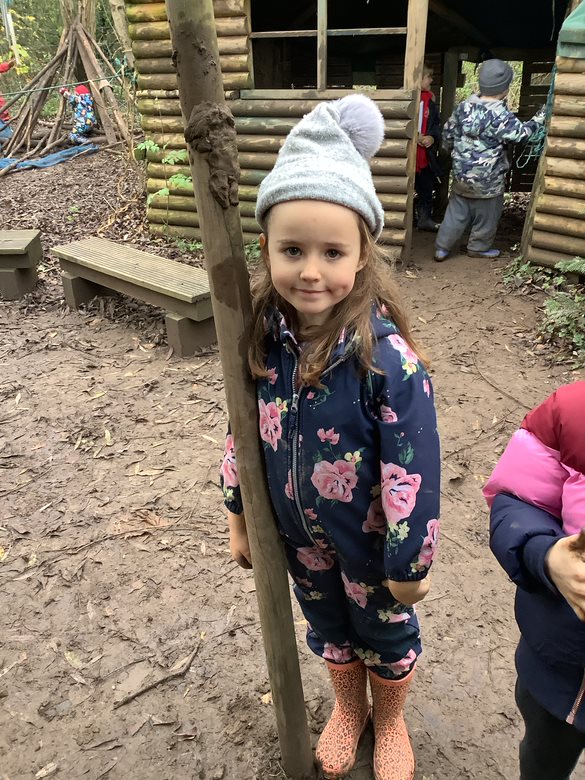
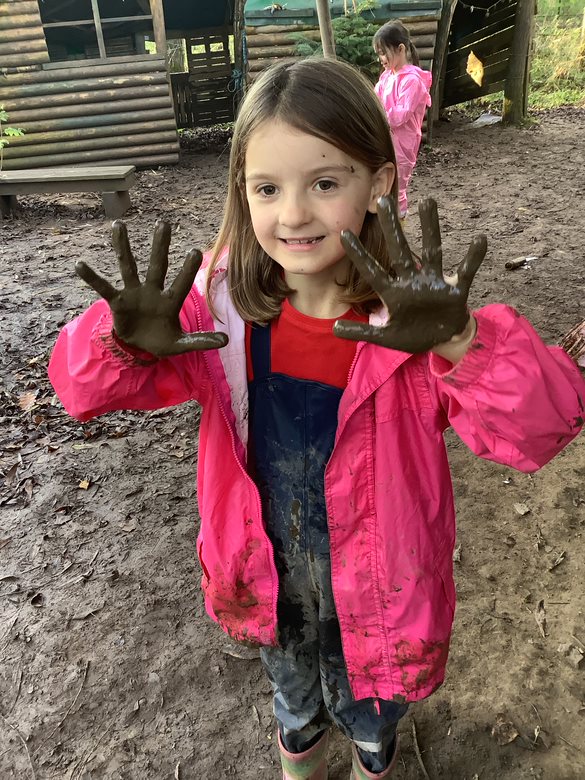
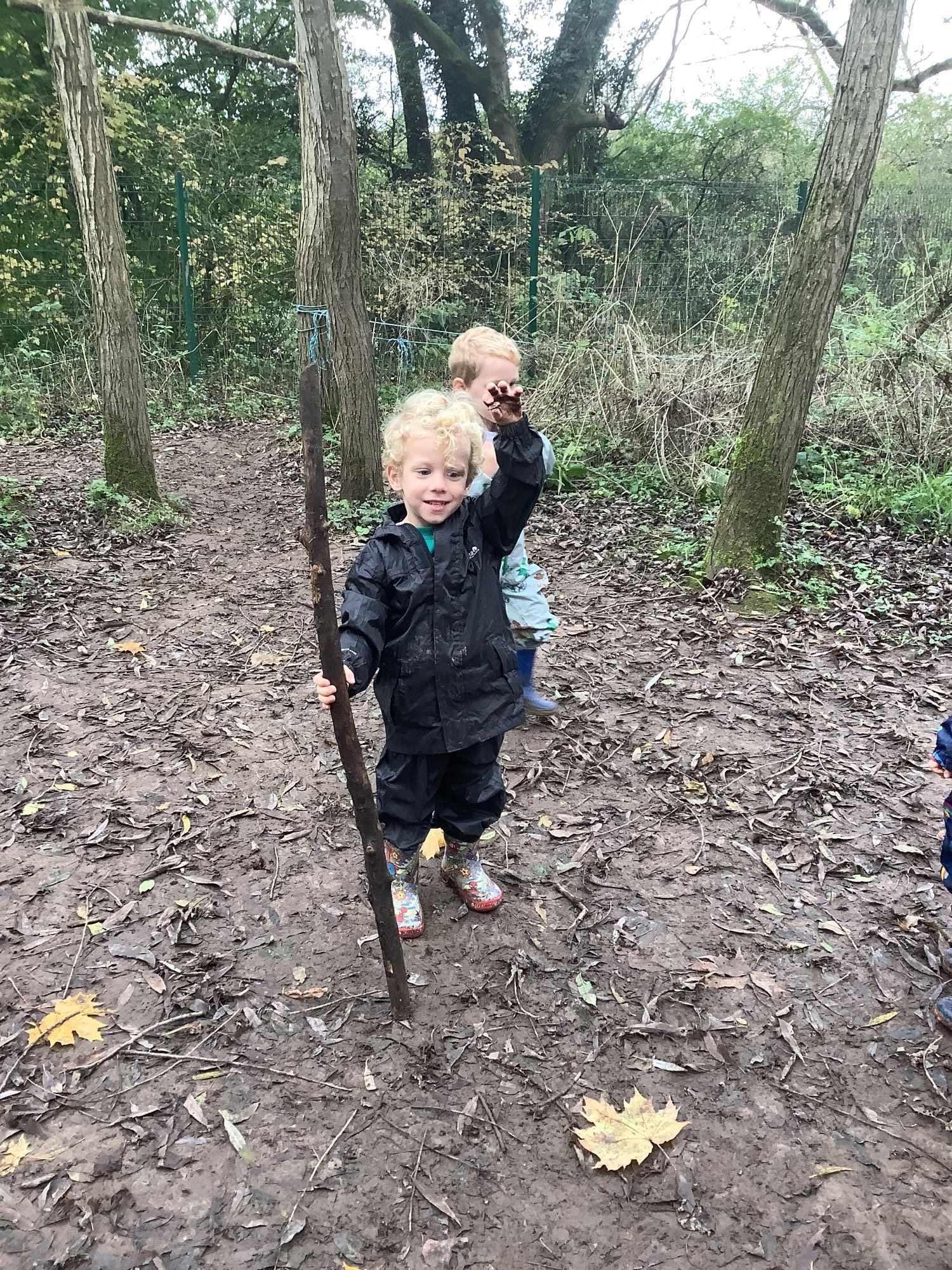
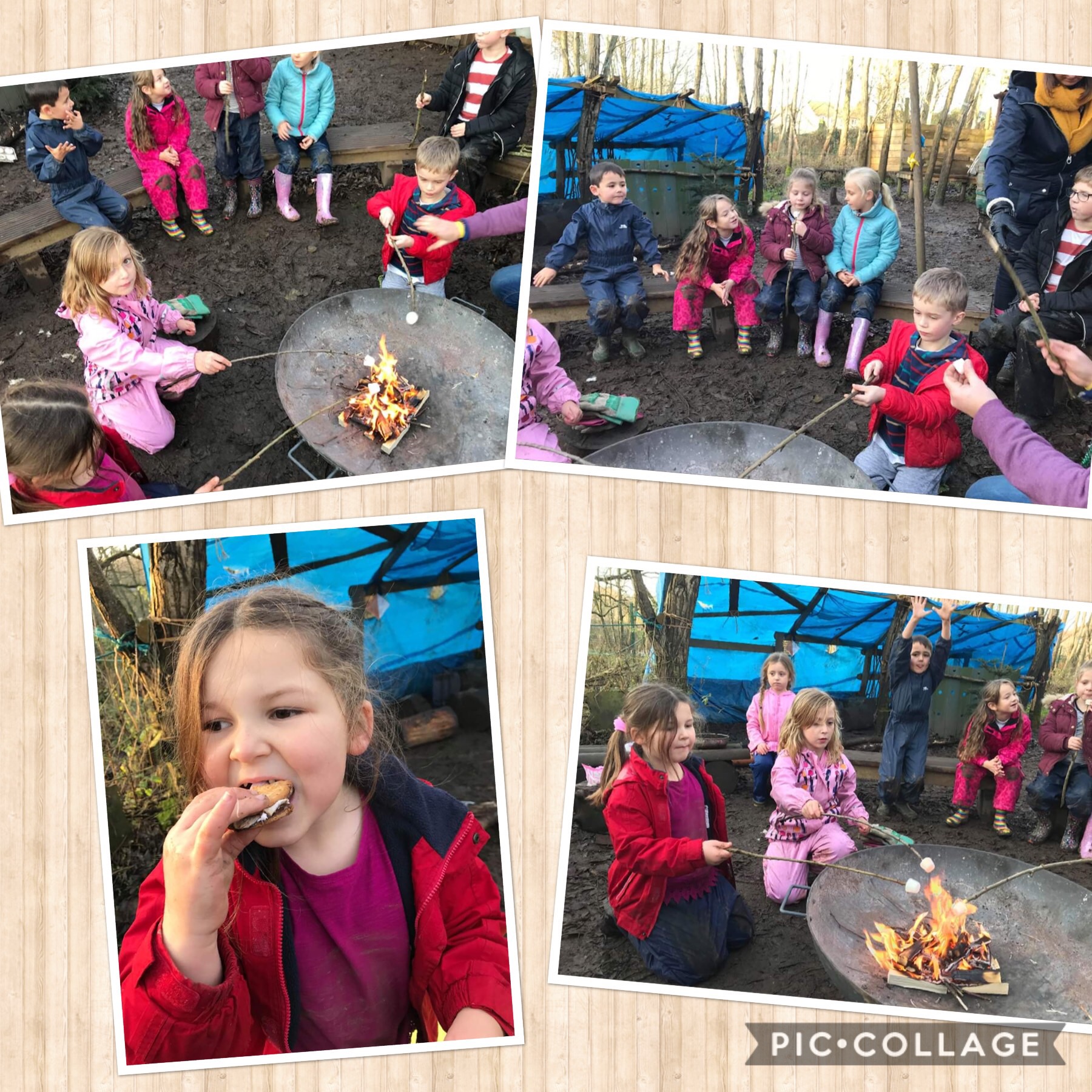
LKS2 down in Forest School hunting for fungi.
Following the recent flooding of the site and continued wet weather fungi are out in force. Using our observation skills we looked at the many differing types of fungi we have. We used this opportunity to remind children of our Forest School Rule - 'No Picking, No Licking'. We talked about how sometimes things may look tasty but they can be poisonous. The children all agreed that they should not eat anything unless it is given to them by a trusted adult.
Leaf Art by Donaldson
Bringing a touch of home to the woods
Regular sessions immersed in nature provide time for the children to experience, explore and experiment. Through the mastery of small achievable tasks, children are encouraged and inspired to grow in confidence and independence, so that they develop a sense of self-worth. By acquiring new skills, at their individual rates, activities maintain a degree of challenge and excitement.
Building, Creating and Problem Solving
At Forest School, children learn to assess and manage risks for themselves. They develop the lifelong learning skills of reasoning; communication; and compromise, while expanding physical skills through activities such as climbing, digging and building- all leading to children who are resilient in themselves and honing a sense of appreciation and respect for nature and their peers.
Climbing and Travelling
During the session children have the opportunity to engage with the adult-directed activity or focus on their own individual child-led activities. The staff encourage children to explore and find their own methods of problem solving.
Maths in the Forest
Learning to use Tools and Care for our Forest School

